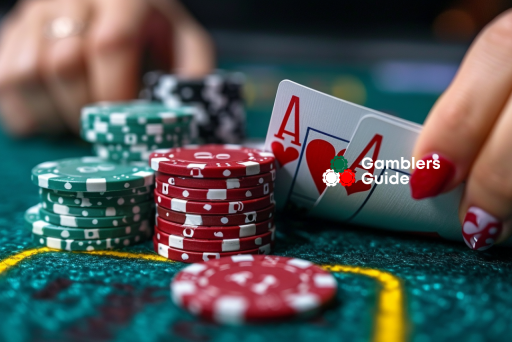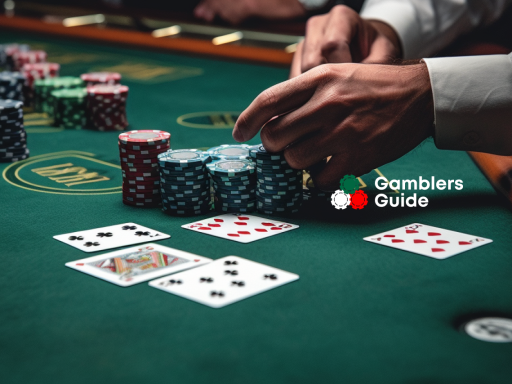Winning a game of blackjack is often considered by beginners a matter of luck and advanced intuition.
- Lady Luck is responsible for the cards the dealer distributes among players.
- Intuition tells you which action to choose next — Hit, Stand, Split, etc.
However, they soon begin to notice certain patterns that experienced card players have known for a long time. Thus, they begin to understand that by intensifying their powers of observation and using special techniques such as card counting, they can significantly increase their chances of winning. Moreover, they will know when it is better to reduce the bet and when, on the contrary, increase it. Find out how you can develop your blackjack skills and win more often.
Laws Underlying Blackjack Card Counting
Since each deck has a fixed number of cards of varying values, you can easily count how many cards are left in the deck. Even if you’re playing with multiple decks, it won’t stop you from doing this simple math. In this case, the final figure will be divided by the number of decks in the game.
This way, you can estimate how many cards of various face values have already been given out by the dealer and how many are left in the deck:
- If players receive a lot of low-value cards, such as 2, 3, 4, etc., the chances of winning by taking another card increase.
- If the dealer gives out a lot of Tens, Aces, and other cards of high value when distributing cards, the chances of winning decrease.
Knowing this, you can vary the bet size by choosing a strategy such as Split, Double, Surrender, etc. Thus, the theory of probability and your observation will work for your benefit. The more carefully and quickly you carry out all the calculations, the higher your chances of winning at blackjack will be.
How to Evaluate the Chances of Success Using Card Counting
Card game professionals have developed a very convenient card counting system that will not cause any difficulties even for beginners. You will have to operate with very simple numbers such as 0, -1, and +1.
- +1 indicates that the chances of a high-value card being drawn next increase. +1 is given to any card with a small number of points: 2, 3, 4, 5, and 6.
- -1 indicates that a high-value card has been placed on the table, such as Ten, Jack, Queen, King, and Ace. This means there are fewer of them left in the deck, and when cards are subsequently dealt from the shoe, the probability of receiving a low-value card increases.
- 0 is assigned to neutral cards such as 7, 8, and 9.
How to Keep Count During the Game
You must keep track of all the cards that the dealer gives to other players and themselves and instantly add them up in your mind. This is easy to do since all numbers will be small. For example, if you are playing with three other players, the count will look like this:
- Player 1: Queen (-1) + 6 (+1) = 0
- Player 2: 4 (+1) + 10 (-1) = 0
- Player 3: Jack (-1) + King (-1) = -2
- You: 10 (-1) + Jack (-1) = -2
- Dealer: 5 (+1) + Closed card = +1
- Sum: 0 + 0 + (-2) + (-2) + 1 = -3
This figure of (-3) tells you that there are fewer high-value cards left in the deck than average. This means that the chances of receiving such a card are reduced. In this case, it would be rational to lower the bet. If you play with several decks, you should divide this value by the number of decks:
- If there are 2 decks in the game -3 / 2 = -1.5
- If there are 4 decks in the game -3 / 4 = -0.75
- If there are 6 decks in the game -3 / 6 = -0.5, etc.
Thus, the more decks in the game, the less accurate the prediction will be, since the weight of the cards already revealed is smaller. So, if you want to use this strategy, it will show a greater effect with fewer cards. For example, if after all the calculations, you get the number +5, this significantly increases your chances of getting a high-value card on the next hand. If there are 8 decks in the game, this difference will decrease to +0.5125, which is unlikely to help you make the right decision regarding your bet.
What’s Important to Consider When Counting Cards
Several important considerations are fundamental in the card counting process:
- You should start counting when playing with a shuffled deck and all the cards are still in the shoe. If the dealer shuffles the cards again, there is no point in continuing the counting; you need to start it over again.
- You must follow this tactic discreetly. If it is obvious that you are solving some mathematical tasks, this can lead to negative consequences. Casinos do not encourage the use of such strategies, since in this case, the player’s chances of success increase. This means that the casino may incur losses. Different states have their views and laws regarding such counting practices. In some of them, this is completely legal because it underlines the professionalism and skill of the player. In other states, a casino may refuse to allow a player to continue playing if they catch someone counting the cards.
- You must be prepared for the dealer trying to confuse you so that you do not gain a competitive advantage. For example, they can shuffle the cards more often so that players start their counting again. In this case, the indicators they will receive will be less clear for making a confident decision. The dealer can also deal cards faster to throw you off the count with such a high speed. Either way, take it as a challenge and keep practicing.
The Bottom Line
Hidden strategies can be used in games that require scoring. They will increase your chances of success and tell you what to do next and what your bet should be. Therefore, in parallel with the open counting of the points received by each player during the game, you can keep another score. It takes into account the number of high, low, and neutral value cards that have already been dealt by the dealer. This will tell you which cards of what rank are left in the deck. Master card counting to anticipate the future course of the game and make effective decisions that will lead you to big wins!






